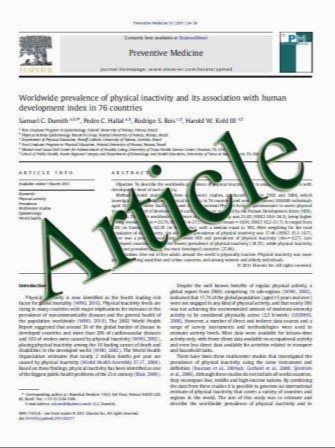Pachymic acid impairs breast cancer cell invasion by suppressing nuclear factor-jB-dependent matrix metalloproteinase-9 expression
- نوع فایل : کتاب
- زبان : انگلیسی
- مؤلف : Hui Ling Yaochun Zhang Ka-Yun Ng Eng-Hui Chew
- چاپ و سال / کشور: 2010
Description
Pachymic acid (PA), a lanostane-type triterpenoid derived from Poria cocos, possesses demonstrated anti-inflammatory and anti-cancer activities. Nonetheless, the biological properties and mechanism/s of action of PA remain largely undefined. In this study, the activity of PA against breast cancer cell invasion was evaluated. Invasiveness of human-derived MDA-MB-231 and MCF-7 breast carcinoma cells was suppressed by PA at non-lethal concentrations, which was associated with a decrease in matrix metalloproteinase-9 (MMP-9) secretion as a result of PA-mediated down-regulation of MMP-9 mRNA expression. In order to elucidate the underlying anti-invasive mechanism, the effect of PA on transcription factors activator protein-1 (AP-1) and nuclear factor kappaB (NF-jB) was examined using luciferase-based reporter gene assays. PA was found to bring about a reduction in phorbol 12-myristate 13-acetate (PMA)-induced transcriptional activity of NF-jB, but not that of AP-1. In accord with the luciferase activity data, western blot analysis showed that PA inhibited NF-jB signaling pathway, but did not alter the phosphorylation states of mitogen-activated protein kinases including ERK, JNK, and p38 kinase. The inhibition of PA on NF-jB signaling pathway was further attributed to PA-mediated diminution in PMA-induced degradation of inhibitor of kappaBa (IjBa) through preventing phosphorylation of the upstream signal IjB kinase (IKK). A decrease in p65 nuclear translocation was achieved, which led to attenuation of NF-jB transactivation. Taken together, it was concluded that by targeting NF-jB signaling, PA inhibited breast cancer cell invasion through decreasing MMP-9 expression. PA may thus be potentially exploited for use in tumor metastasis intervention.
Breast Cancer Res Treat (2011) 126:609–620 Received: 18 February 2010 / Accepted: 28 April 2010 / Published online: 3 June 2010 Springer Science+Business Media, LLC. 2010


